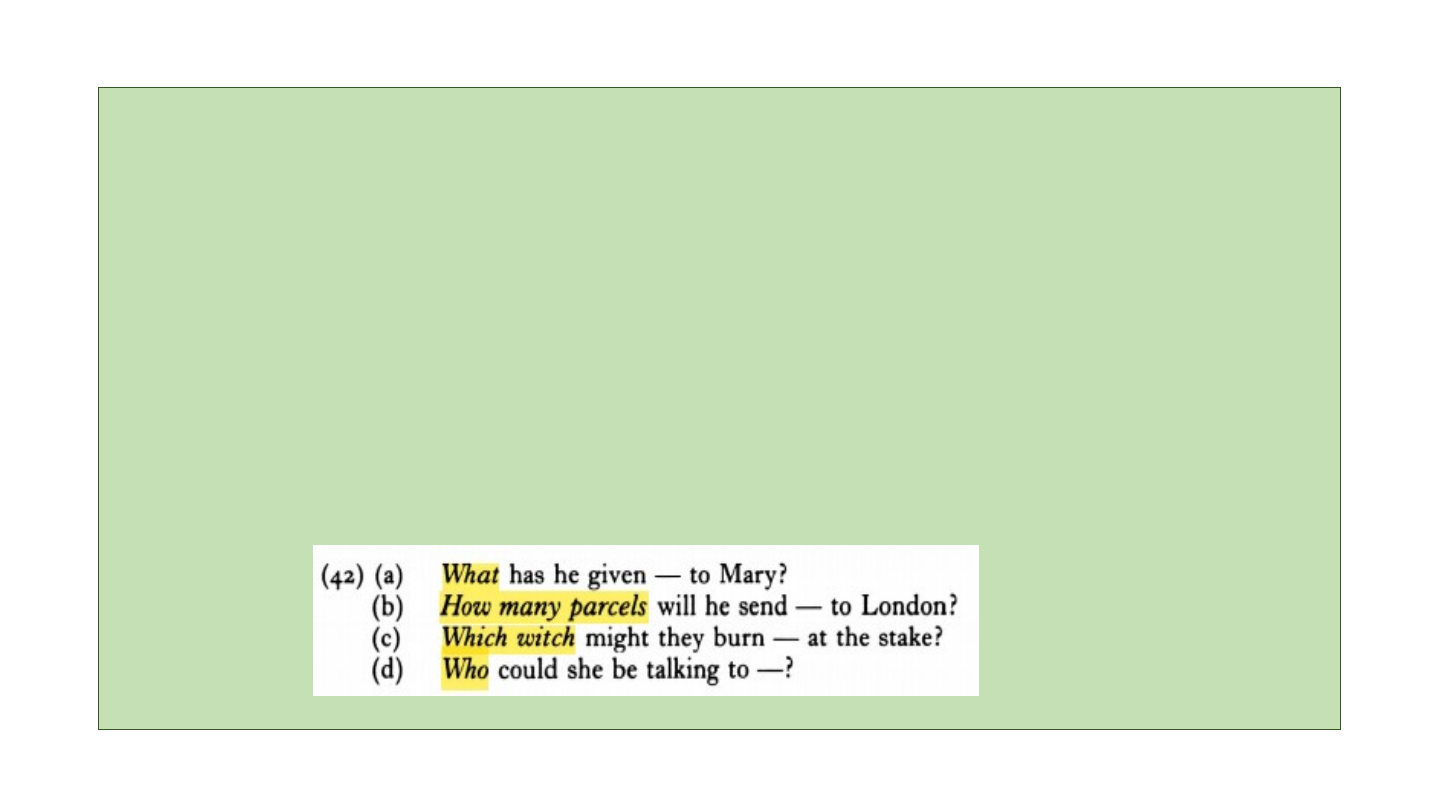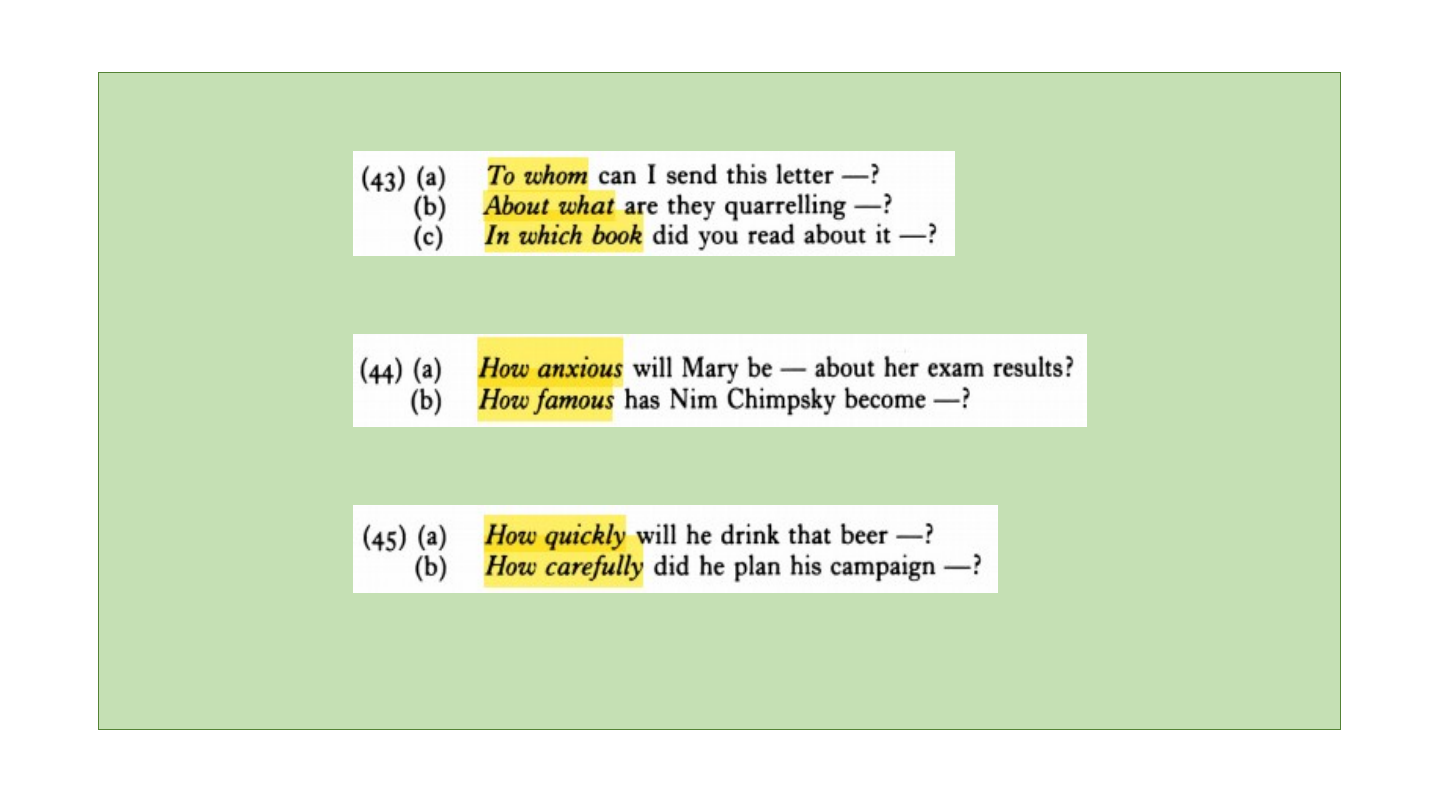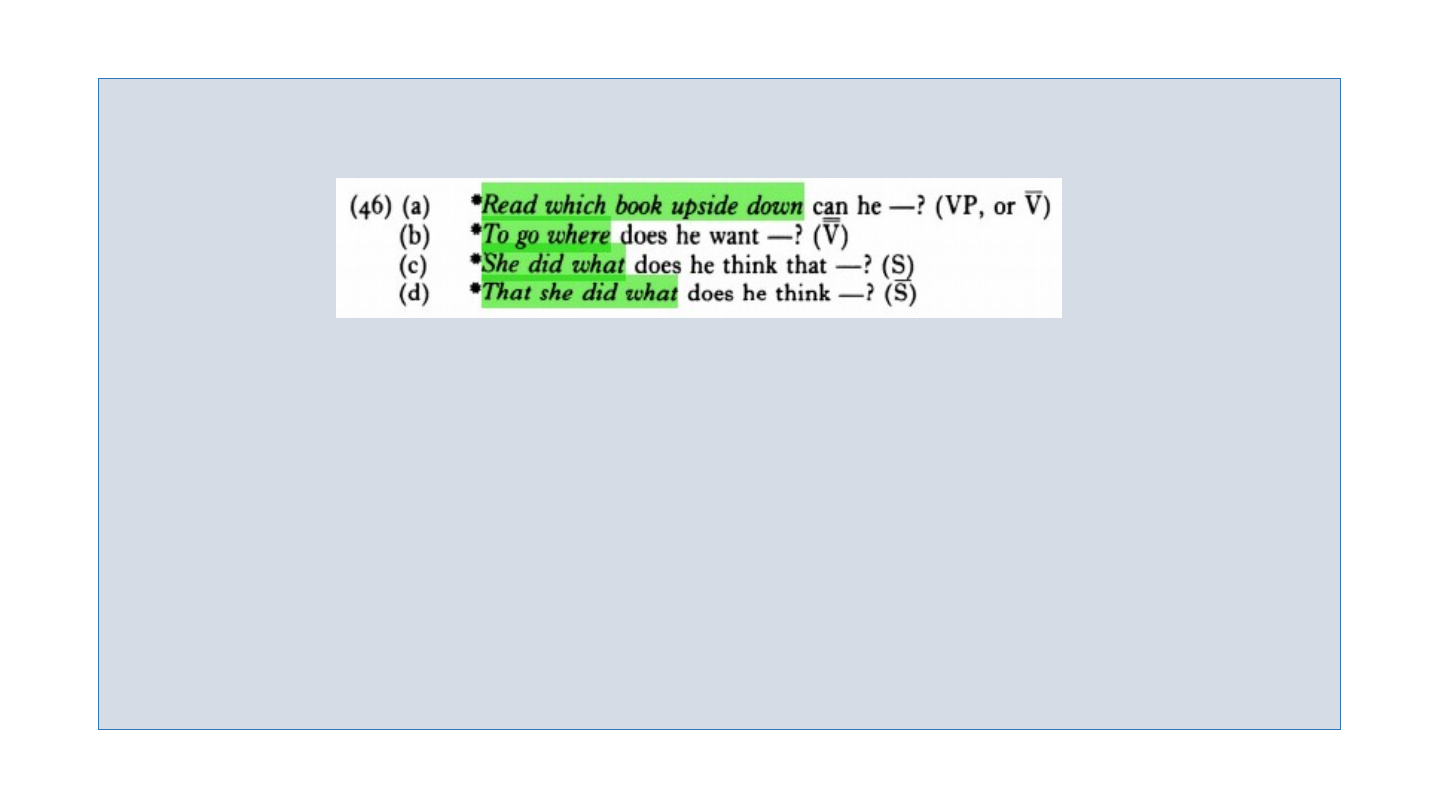
3. WH-Movement vs. NP-AUX Inversion
It has been assumed that Wh-Movement and NP-AUX Inversion are distinct
movement
rules, for the following reasons.
[1] Firstly, inversion may take place in sentences not containing a wh-phrase:
(38) (a) Will your father put the car in the garage?
(b) Never again will your father put the car in the garage.
[2] Secondly, inversion may take place in sentences containing a non-preposed wh-
phrase:
(39) A: Will your father put the Mercedes in the garage?
B: Will my father put which car in the garage? (echo question)
[3] Thirdly, embedded wh-questions show preposed wh-phrases without inversion:
(40) I don’t know which car your father will put in the garage.

4. Argument about WH-Movement
▶ What exactly is a wh-phrase, and what kind of wh-phrases can be moved to the
front
of a clause by WH-Movement?
▶ Wh-phrase contains a wh-word like who, what, which, when, where, why, how, etc.
▶ The argument about WH-Movement can be explained through four parts:
[1] subcategorization [2] case-marking [3] agreement [4] idiom chunk ar-
gument
[1] Subcategorization: Moved wh-phrases are subcategorized in syntactic struc-
tures as NP,
PP, AP, and ADVP, but not VP or S
(1) Noun Phrase(NP) containing a wh-word can be moved.

(2) Prepositional Phrase(PP) containing a wh-word can be moved.
(3) Adjectival Phrase(AP) containing a wh-word can be moved.
(4) Adverbial Phrase(ADVP) containing a wh-word can be moved.
=> An NP, PP, AP or ADVP containing a wh-word can undergo WH-Movement.

(5) Neither VP(including V’) nor S(including S’) can undergo WH-Movement.
=> Only nonverbal phrasal categories can undergo WH-Movement in English.
An account of subcategorization restriction is possible in favour of positing
a transformation of WH-Movement.

[2] Case-Marking: In personal pronouns, we find a morphological distinction between
nominative forms like I/he/we/they and accusative forms like me/him/us/them.
Generally speaking, nominative forms are used before verbs, an accusative
forms are used after verbs and preposition.
case assigner case assignee
tensed verb subject -> assigning nominative case
transitive verb object -> assigning accusative case
preposition object of P -> assigning accusative case
(47) (a) I/*me fainted
nominative case
(b) John saw me/*I
accusative case(=objective case)
(c) Mary won’t speak to me/*I
accusative case(=objective case)

▶ The case-marking in the sentence that undergo WH-Movement can be
applied in
underlying structures(deep structures).
The wh-words in (50)(a) and (50)(b) come out of underlying structures as in (51)(a) and
(51)(b)
respectively. The case-marking rule determines the choice between ‘who’ and ‘whom’ op-
erates on
some level of structure prior to the application of WH-Movement. i.e. the ‘who’ and ‘whom’
in the
underlying structure (51) are case-checked, and then the wh-words are moved to the front of
the sentence with the cases for proper interpretations of NP (=who, whom), linking to the
corresponding surface structure by a transformation of WH-Movement.
The ‘who’ in (51)(a) has a nominative case and the ‘who/whom’ in (51)(b) have
an accusative
case. And these ‘cases’ are preserved in surface structures of (50)(a) and (50)(b).
=> surface structure
=> underlying structure